Table of Contents
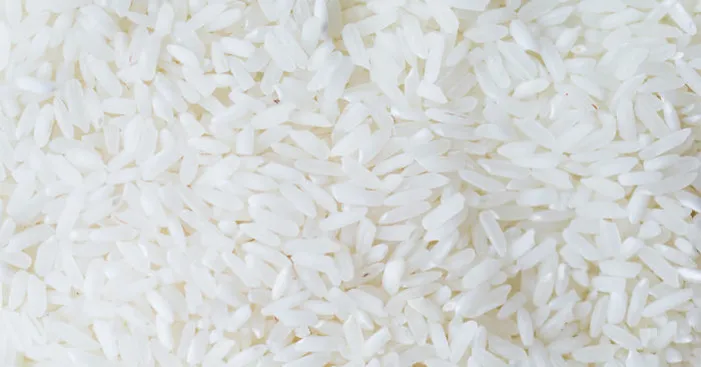
Sona masoori rice is a cross between the Sona and the Mahsuri varieties.
Sometimes also spelled “sonamasuri” or “Sona masori”, this rice is aromatic and light and can be found white or brown.
Sona masoori rice is mainly grown in Andhra Pradesh-India where they call it “Bangaru Theegalu” AKA “Golden Ivy”.
In this article, we gathered all the useful information you need to learn about Sona masoori rice nutritional data, health benefits, and possible side effects with tips on how to buy, cook and store this type of rice.
The daily serving of rice:
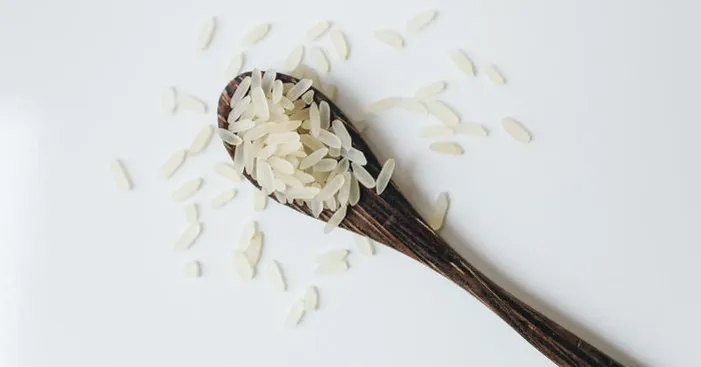
Regardless of the type of rice, a serving is generally about ¼ of a cup of 45g per person.
In case you don’t have a cup to measure, use a standard glass of water and fill it halfway through since a full glass is about 2 servings.
It may look like a small quantity but you should remember that rice doubles in size once cooked.
Make sure you consume a serving of sona masoori rice with ground peas, chickpeas, and lentils to ensure that you have a complete meal.
Sona masoori rice benefits and nutritional values:
Nutritional values of sona masoori rice:
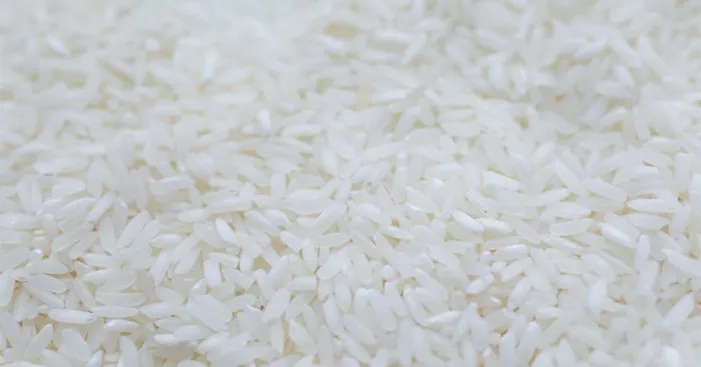
The caloric intake of sona masoori rice is about 160 calories per one serving of 1/5 of a cup (45g).
Similar to vital grains such as wheat, milo, and maize … this type of rice has a high caloric value.
This is why a serving of rice should be less than that of a couscous or spaghetti dish as it contains 2 times more calories.
Proteins:
Sona masoori rice offers 3.6g of proteins per serving which is
Nonetheless, rice protein is incomplete and lacks few amino acids which is why you can’t count on rice as a primary source of protein.
You should also know that an average-weight woman must daily consume 46g of protein while men need about 56g.
In this case, consuming Sona masoori with vegetables, beans, and meat would ensure that you have a complete and diverse protein source.
Carbohydrates:
Almost 80% of sona masoori rice comes from carbohydrates with almost 35g per serving of 45g of rice.
This also means that most of these rice calories come from carbohydrates as 1g of carbohydrates provides 4 calories.
Therefore, a serving of sona masoori rice is about 160 calories of which 140 are coming from carbohydrates.
Carbohydrates are important as we daily need around 300g therefore, a serving of this rice would help reach the requirements.
Fats and sodium:
The good news is that Sona masoori rice is sodium-free and has a very small amount of fats of 1g per serving.
This is because such rice already when through a refining process that took off the natural coating that contains all the fats.
Composition of brown and white Sona masoori rice:
This data set counts for 1/5 cup (45g) of white Sona masoori rice:
- Calories: 160
- Protein: 3.6g
- Carbs: 35g
- Fat: 1.14g
- Fiber: 0g
- Vitamin C: 4%
- Calcium: 1%
- Potassium: 2%
- Iron: 4%
This data set counts for 1/5 (45g) of brown Sona masoori rice:
- Calories: 160
- Protein: 3.6g
- Carbs: 35g
- Fat: 2g
- Fiber: 2g
- Vitamin A: 5%
- Vitamin C: 4%
- Calcium: 2%
- Potassium: 3%
- Iron: 7%
Health benefits of sona masoori rice:
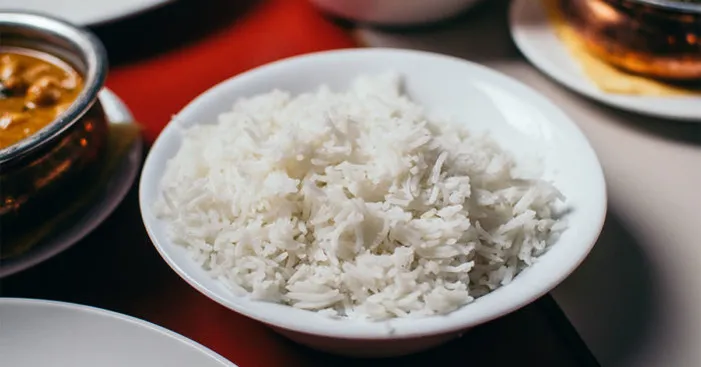
Contains Methionine:
Among the hidden nutrients in Sona masoori rice is methionine, an amino acid that provides sulfur.
As one of the hidden nutrients in rice protein, methionine prevents damage to the skin from UV radiation and free roots.
In addition, this amino acid detoxifies the liver which results in a slower cell degeneration, therefore, slowing down aging signs.
It also enhances hair color and prevents skin wrinkles and stretch marks from appearing.
Offers vitamin A:
Even though vitamin A exists in small amounts in brown Sona masoori rice it will still ensure that you reach your daily needs.
This vitamin is responsible for many body functions including immunity, reproductive functions, vision, and the nervous system.
In addition, vitamin A reduces inflammation and reduces the process of collagen decomposition, thus maintaining skin health.
Boosts the energy:
Just like cars need gas, the human body needs carbohydrates to fuel itself to have enough energy to function.
Since Sona masoori rice is full of carbohydrates it boosts the metabolism of the body.
Sometimes we feel so mellow and that is most likely because the body is lacking carbs to provide energy for its cells.
Not only energy for physical activities but also proper brain functioning.
Because of that, nutritionists recommend that at least 50% of the daily calorie intake comes from carbohydrates.
Consuming a serving of sona masoori rice will certainly not provide all the carbs you need but it will cover about 12% of your daily needs.
A great source of resistant starch:
Resistant starch does not decompose in the stomach and has a similar function to that of the fibers.
In fact, it stays in the stomach and encourages the creation of useful bacteria that the digestive system needs.
As a result, consuming Sona masoori rice would significantly reduce the risk of constipation and lowers bad cholesterol.
Some studies confirm that resistant starch can also improve insulin sensitivity, lower appetite, and lower blood sugar levels.
Precautions before consuming Sona masoori rice:

Consuming a large quantity of Sona masoori rice or any type of rice may cause some side effects.
Rice is naturally brown, however, the refining process takes off the outer coating to produce purely floury albumen white rice.
In the case of white Sona masoori rice, it loses its envelope but it also loses parts of its fibers, phytoestrogens, lignans, and phytic acid.
All of these nutrients could be very beneficial in reducing the factors of diabetes.
In fact, a study published in the British Medical Journal in 2012 confirms that people who consume more than 1.6lbs (750g) of rice per week had a 25% increased risk of diabetes.
This is mostly because of the high glycemic Index of Sona masoori rice which causes a sudden rise in blood sugar levels.
Nonetheless, some other studies confirm that this risk is at its minimum with moderate consumption of 2 or 3 a month.
Furthermore, some studies also link the high glycemic index of white rice with a higher risk of obesity, strokes, and heart diseases.
Anyhow, these dangers are only associated with the almost daily consumption of white Sona masoori rice.
Consuming Sona masoori rice:
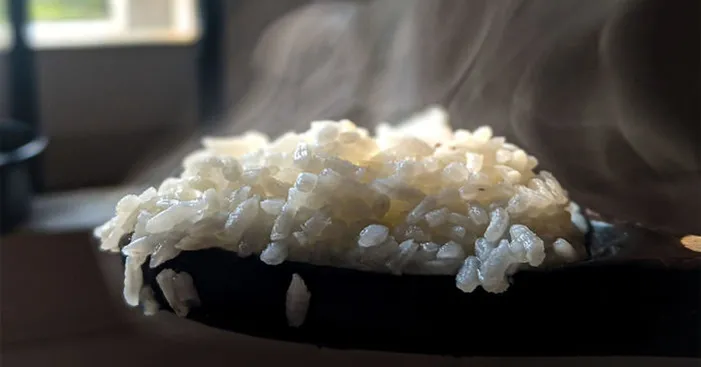
Here are some useful tips to boil your rice the correct way:
- Don’t cook too much rice and make sure you already know that once cooked it doubles its size.
- For that, you need to plan ahead by using a wide pan so that the grains have enough room to expand while being cooked.
- You need to know that rice in general can absorb up to 160% of its weight in water, thus 3 cups of water for every 2 cups of rice.
- Boiling Sona masoori rice in water takes about 15 minutes.
- Let the rice boil without stirring for the first 3 minutes to prevent it from sticking and only stir after 3 minutes.
- In fact, by doing that you are allowing the starch to stick to the walls of the grains and avoid sticking.
- Always avoid overcooking Sona masoori rice since the longer you cook it the higher its glycemic index gets.
Sona masoori rice with tuna and mayonnaise:
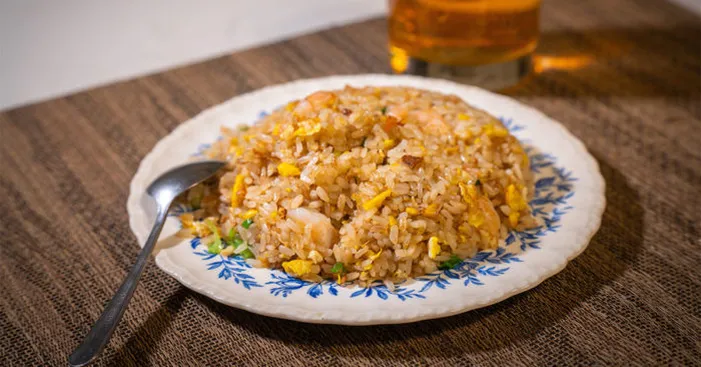
Ingredients:
- 220g of sona masoori rice (1 cup).
- 1 tuna can.
- 1.5 cups of water.
- 3 eggs.
- 3 chopped tomatoes.
- 4 tbsp of mayonnaise.
- Salt and pepper.
Preparation:
- Bring the water to a boil in a pan then add 2 tsp of salt and add the rice and let it cook for 15 minutes.
- Boil the eggs on their own for 8 minutes then let them cool down and peel them off.
- Chop the tomatoes into small cubes and do the same thing for the boiled eggs.
- Drain the tuna from its oil.
- Mix the cooked rice with chopped eggs, tomatoes, and dried tuna.
- Add the mayonnaise to the mix then add salt and pepper and stir well to make sure all the rice is coated with the mix.
- Serve it as a salad for up to 4 people.
Sona masoori rice casserole in the oven:

Ingredients:
- 2 chicken breasts or 3oz of beef.
- 1 potato.
- 2 chopped tomatoes.
- 2 cups of rice.
- ¼ cup of chickpeas.
- 4 cups of cooking broth (chicken broth).
- 1 garlic bulb separated into peeled cloves.
- 2 tbsp of olive oil.
- Salt.
Preparation:
- Start by preheating the oven to a 390°F (200°C).
- Cut the meat and vegetables into small cubes and slices.
- Heat the oil in a frying pan then fry the rice while stirring until it becomes clearly white.
- Now add the peeled garlic cloves alongside the meat and chickpeas and mix all the ingredients while they fry.
- Add the cooking broth and add chopped potato and tomato.
- Now pour the mixture into an oven tray then put it in the oven until the whole broth is absorbed by the rice.
- After 20 minutes in the oven, your dish should be done, serve it for up to 9 people!
Sona masoori rice with carrots and chicken:
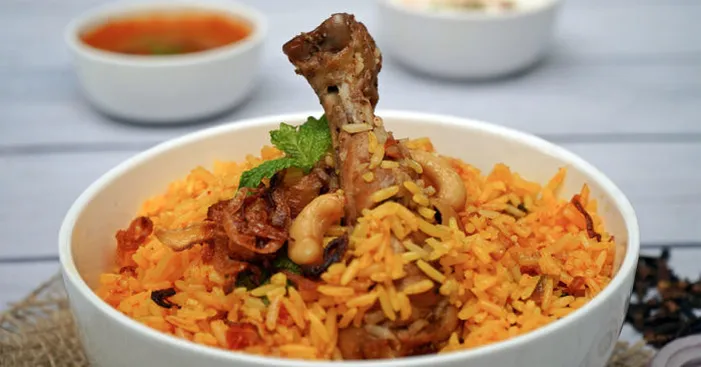
Ingredients:
- 1.5 cups of rice (370g).
- 2 carrots.
- 2 onions.
- 1 cup of chickpeas.
- 4 chicken breasts.
- 3 cups of chicken broth.
- 4 tbsp of butter.
- Salt and pepper.
Preparation:
- Start by cutting the chicken breasts into cubes.
- Peel off the onions and carrots then chop them.
- In a pan, melt the butter then fry the onions in it until they get soft.
- Pour the rice over the onions and stir for 3 minutes while it’s frying.
- Now add the carrots, chickpeas, chicken pieces, and chicken broth to the frying pan and bring them to a boil.
- When it starts boiling, add a pinch of salt and ground pepper and reduce the heat to 200°F (90°C) and let it cook for 20 minutes.
- Remove for the heat and serve them to 8 people!
Storing rice:
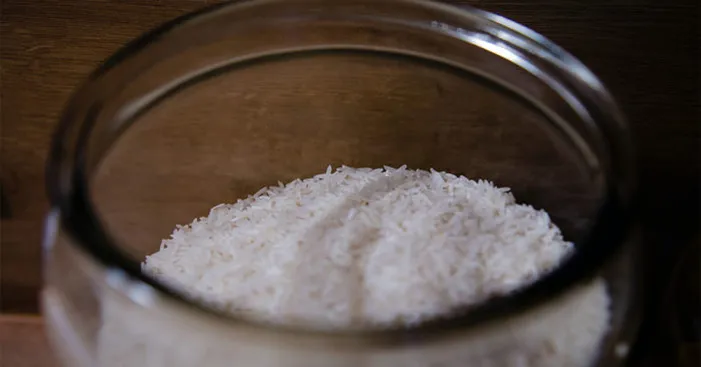
Generally, the rice should stay in its original packaging, and once it’s open we need to transform it into an airtight container.
This is because rice shall always stay away from humidity and germs and not be exposed to air for a long time.
However, the reason we specify these storing tips for Sona masoori rice is that it’s different from other types of rice.
In fact, other types of rice tend to have a lower lifespan as they contain more oils, unlike Sona masoori rice which can last for years.
Putting this rice in an airtight container will retain moisture and ensure its protection from dust, insects, and germs.
Here are some useful tips to store Sona masoori rice correctly:
- Make sure the container’s lid is also airtight as you don’t want any moisture to get inside.
- Place the airtight rice container in a dry and cool place for a maximum lifespan of up to 1 year.
- Frozen raw rice doesn’t need thawing because the rice is almost free of water and doesn’t freeze, it just feels cold.
- You should discard the rice if you notice mold, parasites, or any change in color or odor.
Nonetheless, cooked rice is different as it spoils much faster.
If the cooked rice is hard and dry or smells weird you should get rid of it immediately.
In order to store cooked rice the right way you need to:
- Make sure you store the cooked rice within 2 hours of cooking to prevent any bacterial growth.
- Place the cooked rice in an airtight container in the fridge for up to 2 days.
- You can also store the airtight rice container in the freezer for up to 5 days.
- You should discard the cooked rice if you notice any spoilage factor.
Buying rice:
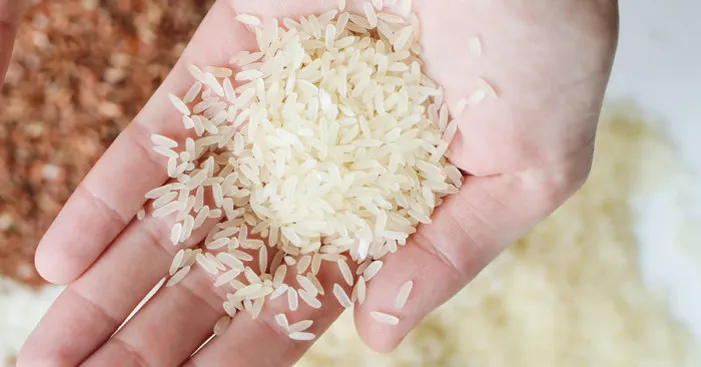
Rice in general can be tricky to buy as it’s not easy to notice the difference between fresh and old rice.
There are a few easy tips anyone can follow to buy the best rice:
- The texture of the rice must be robust and the seed shouldn’t break easily when you press it.
- If you are buying white Sona masoori rice: it should not be very white as some producers use whiteners and instead choose the one with a natural white.
- Pay attention to ticks, sometimes fresh rice is mixed with old rice and small insects can be your biggest indicator in this case.
- Hold a few seeds in your hand, old rice usually leaves flour-like traces.
- Avoid rice that has a strong fragrance as that is mostly artificial and choose rice that doesn’t have a smell be it good or bad.
